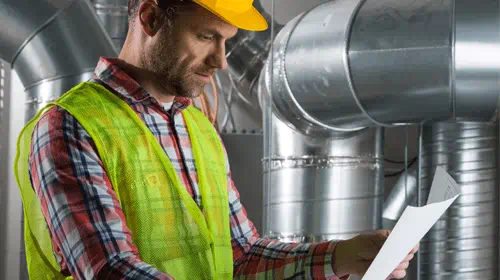Improve energy efficiency through heat and energy recovery
One of the most efficient ways to supply high-quality indoor air is by upgrading to energy recovery ventilators (ERV) or heat recovery ventilators (HRV). Both are able to provide fresh outdoor air while recovering the most energy possible from outgoing air. We can help you upgrade, with expert help and incentives to speed up payback.
Why upgrade?
-
Lower energy and operating costs and increase long-term bill savings.
-
Improve working conditions and productivity.
-
Humidify indoor air in winter and dehumidify it in summer.
-
Remove odours, moisture and fumes.














